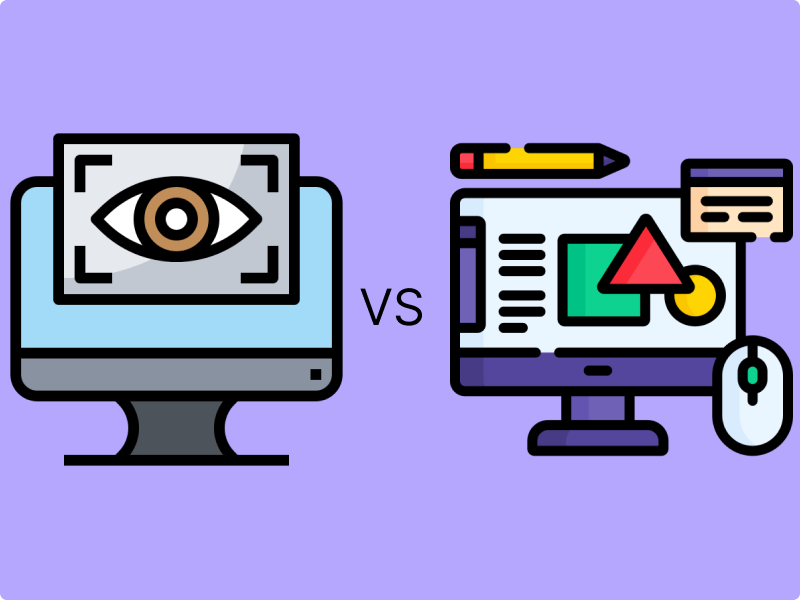In the realm of digital technology, two closely related yet distinct fields play crucial roles in shaping our interaction with computers: computer vision and computer graphics. While both involve the processing and manipulation of visual information, they serve distinct purposes and employ different methodologies.
Computer vision focuses on enabling computers to understand and interpret visual data from the real world, mimicking human vision, whereas computer graphics revolves around the generation and manipulation of visual content, often for artistic, entertainment, or simulation purposes.
Understanding the difference between these fields is essential for grasping their respective applications and contributions to various domains of technology and beyond. In this article, you will gain a detailed explanation of each to elucidate their disparities further.
1. Computer Vision:
- Computer vision is a multidisciplinary field that aims to endow computers with the ability to perceive, analyze, and interpret visual information from the real world. It encompasses a wide array of techniques and algorithms geared towards tasks such as image recognition, object detection, motion analysis, and scene understanding. The ultimate goal of computer vision is to replicate human visual perception, enabling machines to comprehend and extract meaningful insights from visual data. Computer Vision has various applications such as autonomous vehicles, medical imaging, surveillance systems, augmented reality, and robotics. Techniques employed in computer vision include image processing, feature extraction, pattern recognition, machine learning, and deep learning, among others.
2. Computer Graphics:
- In contrast to computer vision, computer graphics focuses on the creation, rendering, and manipulation of visual content, often in the form of images, animations, or simulations. It involves generating virtual environments, objects, and characters using mathematical models and algorithms, and then rendering them into visual representations that can be displayed on screens or other output devices. Computer graphics find applications in various fields, including video games, film and television production, architectural visualization, scientific visualization, and computer-aided design (CAD). Techniques in computer graphics encompass rendering algorithms, 3D modeling, animation, texture mapping, shading, lighting, and rendering pipelines. The primary objective of computer graphics is to create visually compelling and realistic imagery, pushing the boundaries of digital artistry and visual communication.
Conclusion
In summary, while both computer vision and computer graphics deal with visual information, their objectives and methodologies differ significantly. Computer vision seeks to enable machines to understand and interpret real-world visual data, whereas computer graphics focuses on the creation and manipulation of visual content for artistic, entertainment, or simulation purposes. By appreciating the distinctions between these fields, individuals can better comprehend their respective applications, challenges, and contributions to the ever-evolving landscape of digital technology.





